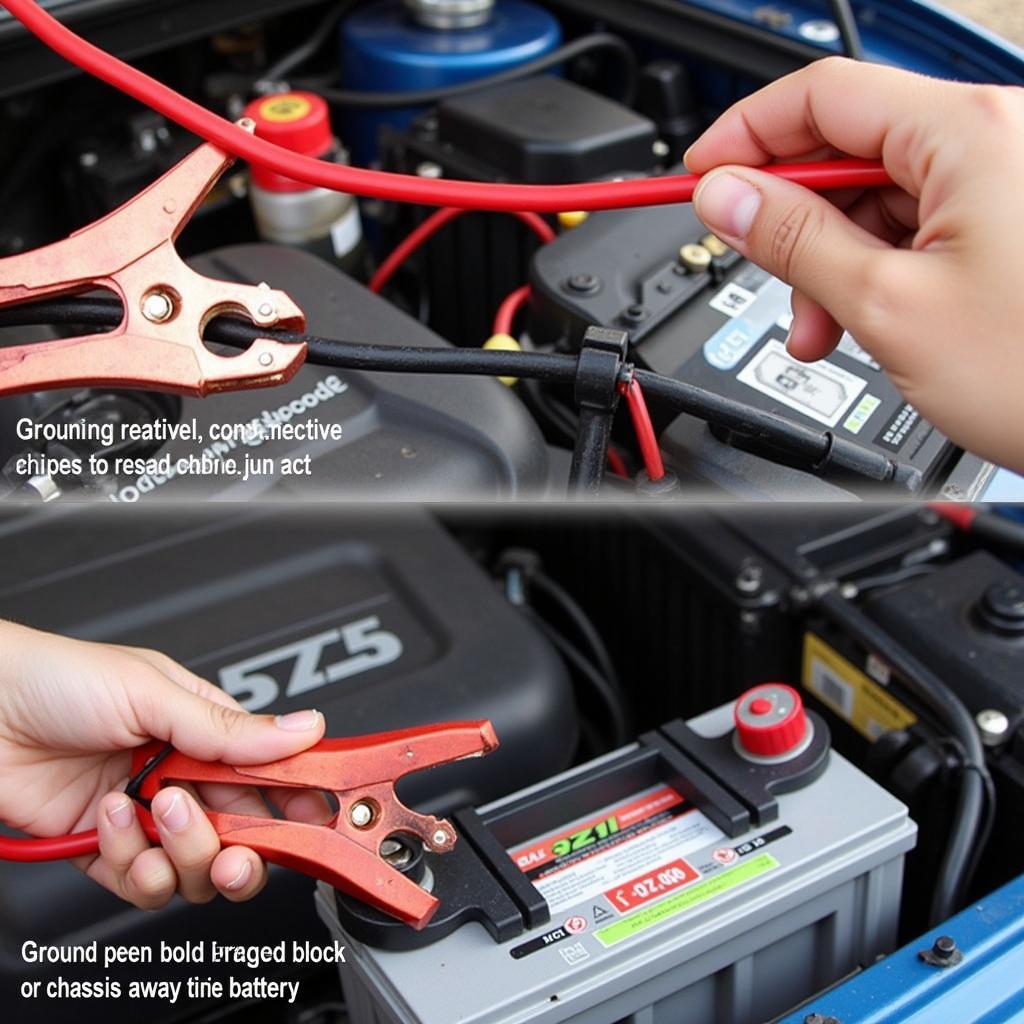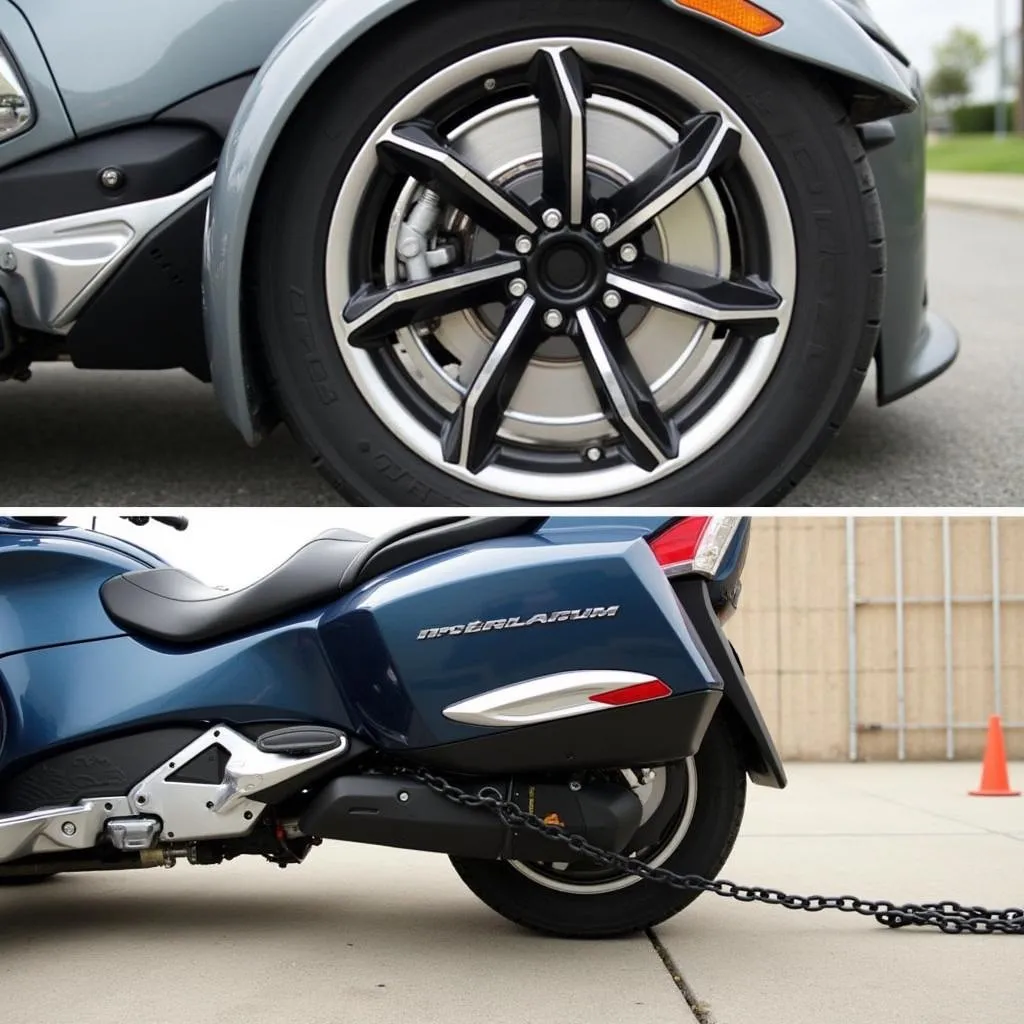A dead battery or a bad starter are the most common reasons why your car won’t start. Figuring out which one is the culprit can save you time and money. This article will guide you through the process of diagnosing whether you have a dead battery or a bad starter, empowering you to take the next steps towards getting your car back on the road.
 Connecting Jumper Cables to a Car Battery
Connecting Jumper Cables to a Car Battery
Identifying a Dead Battery
Several signs point to a dead battery. The most obvious is a complete lack of power – no interior lights, no dashboard illumination, and no clicking sound when you turn the key. Other symptoms can include dim headlights, slow cranking, or a clicking sound when attempting to start, especially after the car has been sitting for a while. You might also notice corrosion on your battery terminals.
Testing Your Battery
A simple way to test your battery is with a multimeter. Set the multimeter to DC volts and connect the red lead to the positive (+) terminal and the black lead to the negative (-) terminal of your battery. A reading of 12.6 volts or higher indicates a healthy battery. A reading between 12.4 and 12.6 suggests the battery needs charging, while a reading below 12.4 volts usually signifies a dead battery. If you’re unsure about testing your battery yourself, a local mechanic or auto parts store can typically test it for you.
If you suspect your key fob is the issue, consider checking out information on how to change key fob.
Recognizing a Bad Starter
If your car has plenty of electrical power (lights, radio, etc.) but the engine doesn’t crank or cranks very slowly, a bad starter could be the culprit. You might also hear a grinding or whining sound when you turn the key. Sometimes, the starter can engage intermittently, working one time and failing the next. This inconsistent behavior is another telltale sign of a failing starter.
Testing Your Starter
While some tests for a bad starter can be done at home, it’s often best left to professionals. Testing involves checking the voltage drop across the starter solenoid while someone attempts to start the engine. This requires specific tools and knowledge.
Distinguishing Between a Dead Battery and a Bad Starter
Sometimes the symptoms overlap, making it tricky to distinguish between a dead battery and a bad starter. If your lights are dim and the engine cranks slowly, it could be either. Trying to jump-start the car can be a helpful diagnostic step. If the car starts readily with a jump, it points to a dead battery. However, if the car still doesn’t start or cranks very slowly even with a jump, the problem is likely the starter. For specific car models, you may need specific information, such as the battery for nissan rogue key fob.
“A clicking sound when you try to start your car is often mistaken for a bad starter,” says automotive expert, John Smith, ASE Certified Master Technician. “But it could just be a dead battery that doesn’t have enough power to engage the starter. Always check the battery first before replacing the starter.”
If you are experiencing issues with your Chevrolet’s remote start, check out chevrolet remote start key fob. Key fob issues can sometimes mimic starting problems.
Another common misconception is that a bad starter will always make a loud grinding noise. “While a grinding sound can indicate a bad starter, a failing starter can sometimes exhibit no noise at all,” says Sarah Jones, a seasoned automotive electrician. “A thorough diagnostic process is essential for an accurate diagnosis.” If you are considering creating your own key fob, you can learn how to make a key fob. However, for specific key fob battery replacements like the 2019 Nissan Rogue, consult resources like 2019 nissan rogue key fob battery.
Conclusion
Determining whether you have a dead battery or bad starter requires a bit of detective work. By paying attention to the symptoms and performing some simple tests, you can narrow down the possibilities. Remember, while some checks can be done at home, consulting a qualified technician is always recommended for accurate diagnosis and repair, particularly for a suspected bad starter. Addressing the problem quickly will get you back on the road safely and prevent further issues with your vehicle’s starting system.


